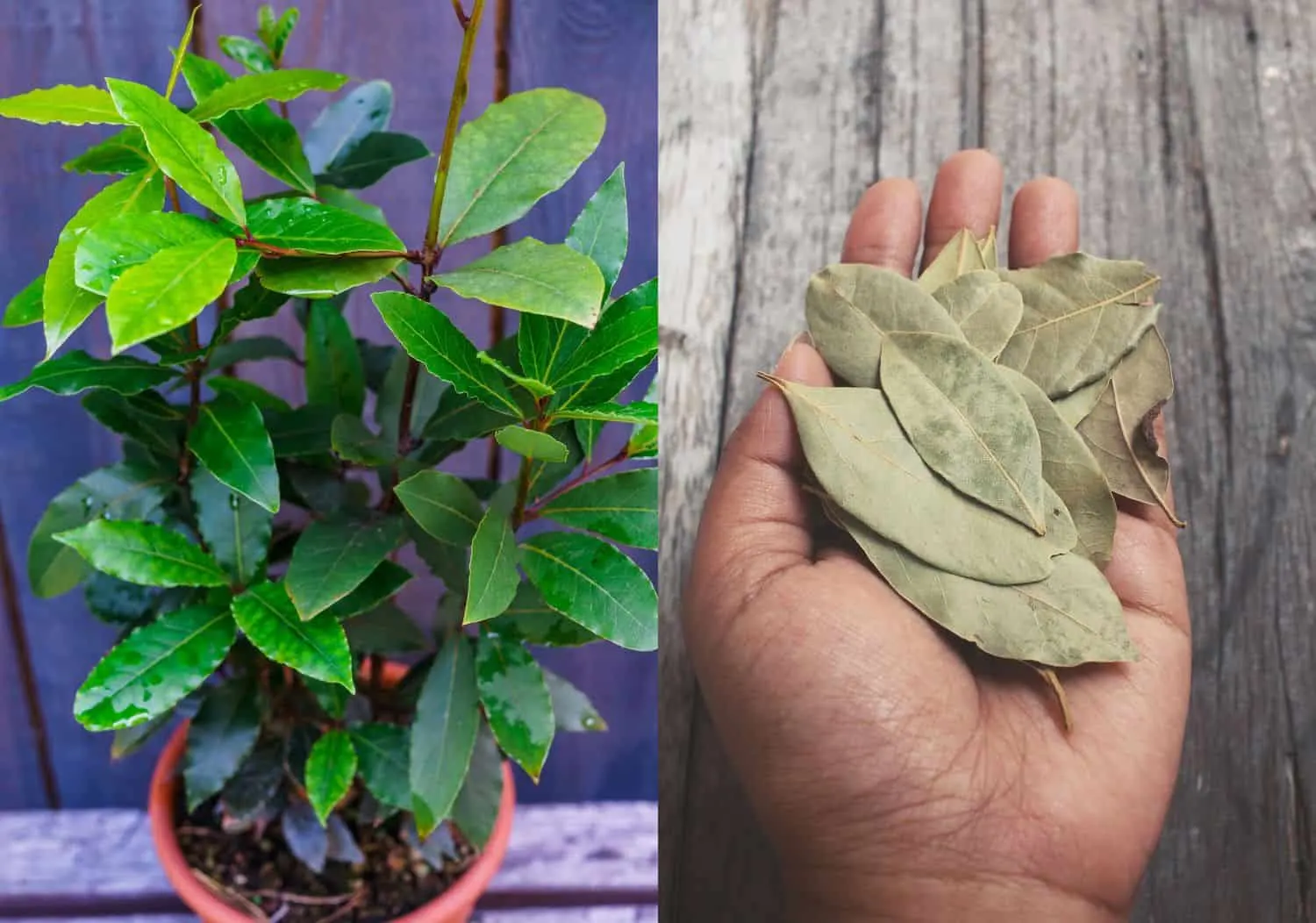
Bay tree (Laurus nobilis) can be a fantastic addition to your home or garden.
Not only is bay an evergreen that will look good all year round, it also provides an edible yield for your garden.
The leaves can be used as a flavoring herb in a range of recipes and can also be utilised in many other useful ways.
Choosing A Bay Tree Variety For Your Garden
Bay is usually purchased as small shrubs or small trees from a garden center or plant nursery. While it can be propagated from seed this can be a time-consuming process.
Laurus nobilis is the most common cultivar, also often referred to as bay laurel. This is a bay tree which is used for culinary purposes.
You can purchase a bay laurel tree online from Nature Hills Nursery here.
There are also another few bay varieties that you might encounter.
The first of these is Laurus nobilis ‘Aurea’ – an ornamental variant with golden-yellow leaves. The second is Laurus nobilis ‘Undulata’, which has wavy edged leaves. A third type is willow-leaved laurel, Laurus nobilis f. angustifolia. This one has thinner leaves, but these are still edible.
Is a Bay Tree the Right Choice For You?
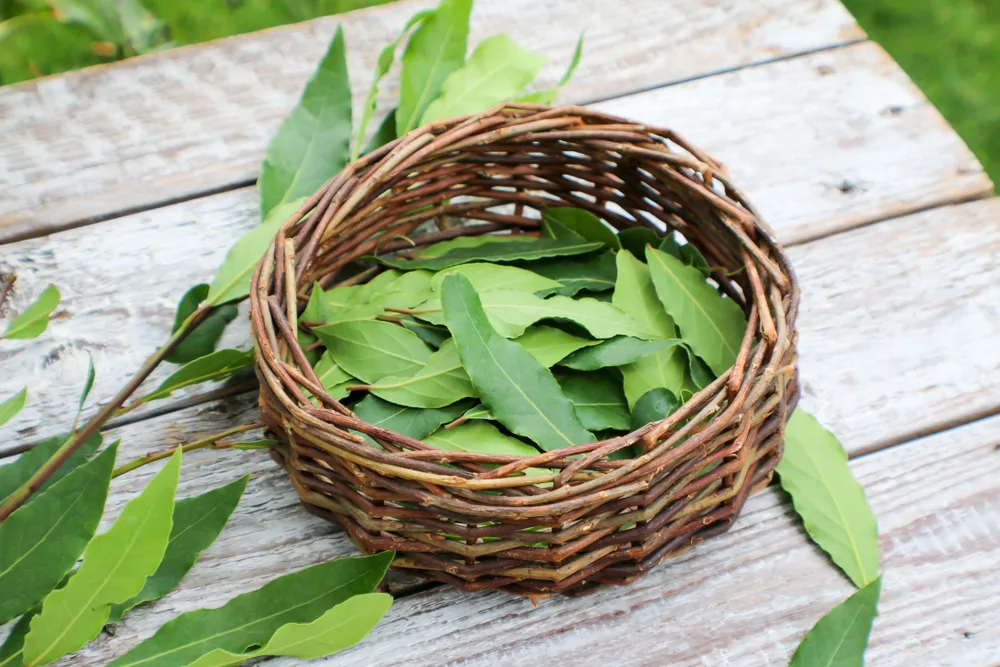
Have You Got the Right Temperatures for Bay?
Bay can be a good choice for many gardens and situations. But it is important to make sure that a bay tree is the right choice for where you live.
They are generally hardy down to -5 degrees C. (23 degrees F.) but can withstand somewhat colder temperatures if they are placed in a sheltered position. If you live in a particularly cold winter area, then bay could be more difficult to grow. However, they will generally grow well in US hardiness zones 5-9.
Is Your Garden Prone to Waterlogging?
Another thing to bear in mind is that bay is rather intolerant of waterlogging. Bay can be grown in a range of soil types as long as they do not get waterlogged.
If grown in the ground it will require a well-drained soil. It can also be damaged by winter winds, and so if it will be exposed to these, should be grown in a sheltered spot.
Will Bay Like Your Soil?
Bay thrives in slightly acidic soil with a pH similar to that preferred by other Mediterranean herbs. If your soil is particularly alkaline in nature, you may find it easier to grow bay in containers rather than in the ground.
Do You Have Space for Bay?
Unlike most other herbs, bay will grow to create a small tree. It grows slowly, but can reach an eventual size of around 39ft x 32ft (12m x 10m), so if you plan to leave it unpruned and unchecked, this is worth bearing in mind when considering it for your garden.
Where to Grow Bay Trees in Your Garden
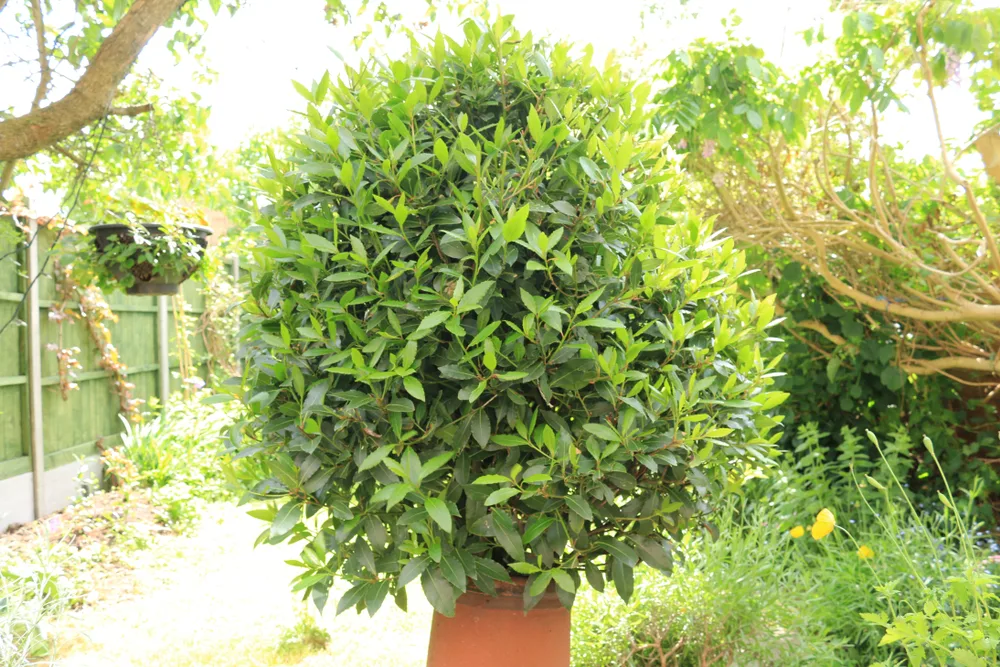
If the climate and soil conditions in your garden are suitable for growing a bay tree, then the next thing to consider is where in your garden your specimens should be placed.
Bay can be used as an individual specimen shrub or small tree, pruned to create topiary or hedging, or grown in containers.
You should choose a spot which is in full sun or dappled/partial shade, avoiding, of course, any particularly exposed areas, frost pockets, or areas prone to waterlogging.
Since you will be using bay in the kitchen, it may be helpful to have it close to your kitchen, where you can easily pick a leaf or two when required.
When & How To Plant A Bay Tree in Your Garden
Bay saplings or young plants are best planted out in the fall, or early spring, so they have a chance to become established before the heat of the summer.
If you are planting your bay tree in the ground, you should:
- Prepare the planting areas – adding organic matter to improve the drainage in heavy soils, or to improve moisture retention in sandy, very free-draining ones.
- Dig a hole that is as deep as the root ball on your bay tree and around twice as wide, to allow the roots to spread out.
- Place the bay upright in this hole, and gently fill in and tamp the soil around it, watering thoroughly though not excessively.
- Add a light mulch around your bay tree to help regulate soil moisture and temperature and discourage weeds which could complete with the young plant, though avoid heavy mulches that could hold too much water around the bay tree.
Growing Bay in Containers
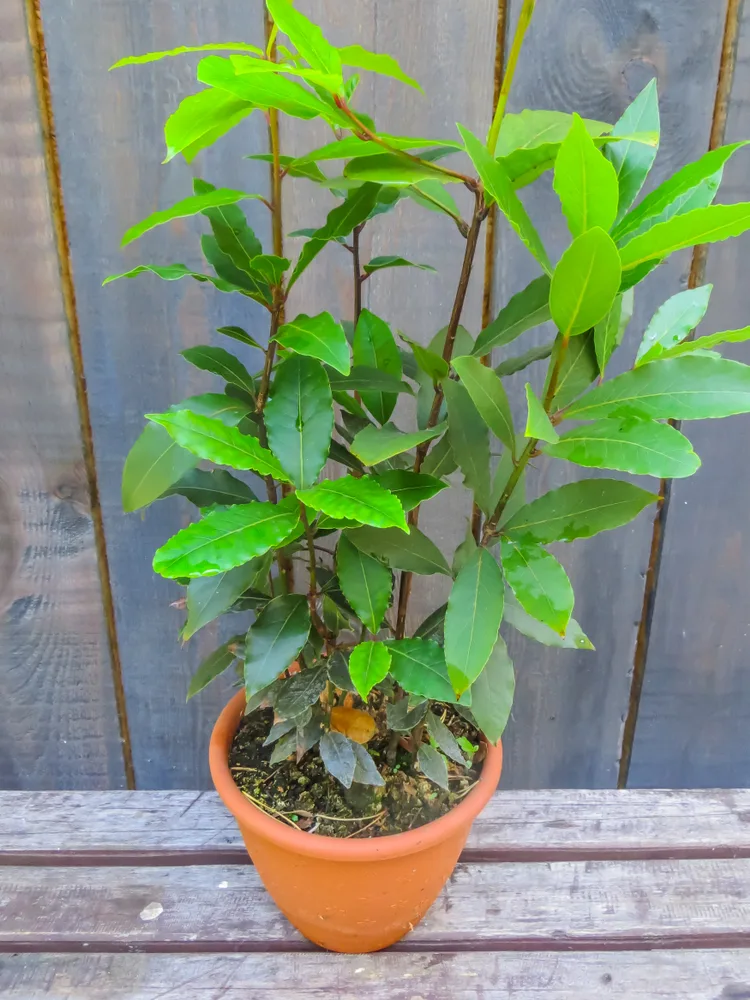
If the conditions are not ideal for in-ground growing in your garden, bay trees can also thrive when grown in containers. Here are a few tips to help you successfully grow a bay tree in a container:
- Use a free-draining medium in your container, adding grit to improve drainage.
- Water only moderately, taking care not to overwater.
- Use an organic liquid feed to replenish fertility over the late spring and summer.
- Replenish compost and tease off around a third of the roots, or re-pot your bay every couple of years.
- Protect your bay tree with fleece, or bring it under cover if temperatures fall below -5 degrees C.(23 F.). You can also protect roots in container plants in cold weather by covering the pots with bubble wrap or another insulative material.
Creating Bay Topiary or Hedging
Bay Topiary
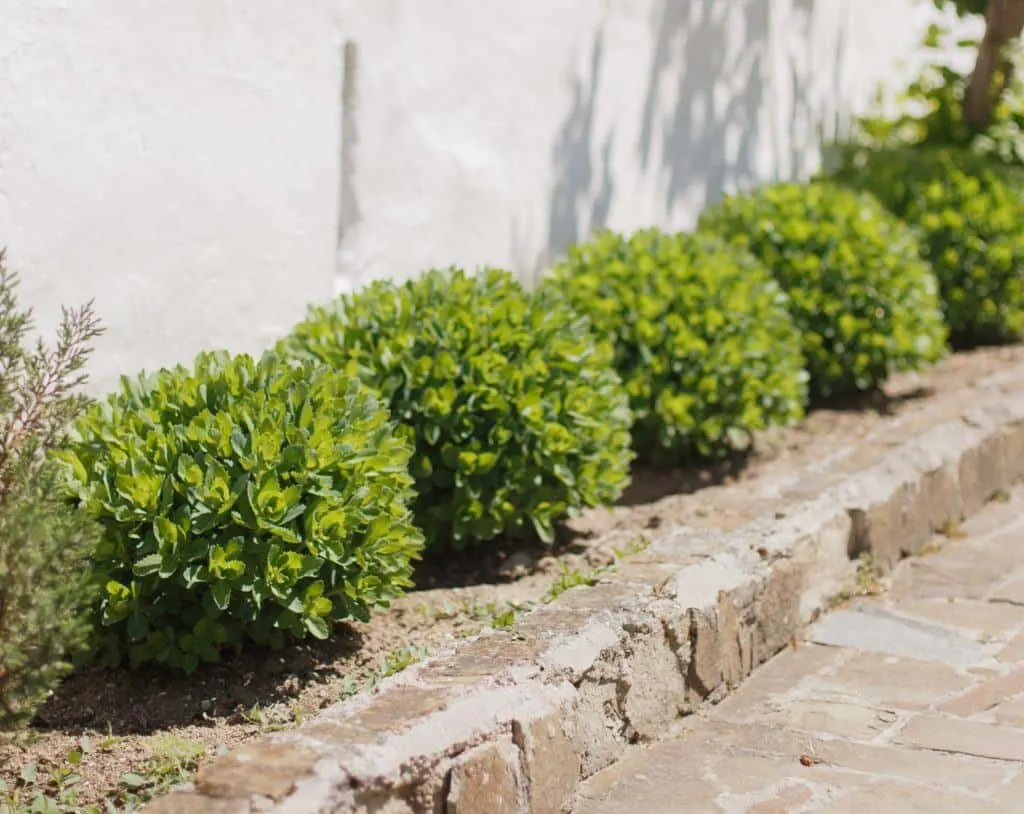
If you plan to create topiary, bay can be pruned and trained into a wide range of interesting shapes.
Typically, you can shape them as pyramids, balls or ‘lollipop’ standards, though some have also been ornately plaited or entwined in a spiral form, while others have created all sorts of animal or mythological forms from their bay trees.
Topiary trained bay trees are trimmed with sharp secateurs in the summer months. This helps to encourage a dense habit of growth, and to maintain the desired shape. New shoots should be pruned to a bud which faces in the direction in which you wish the growth to form.
Bay Hedging
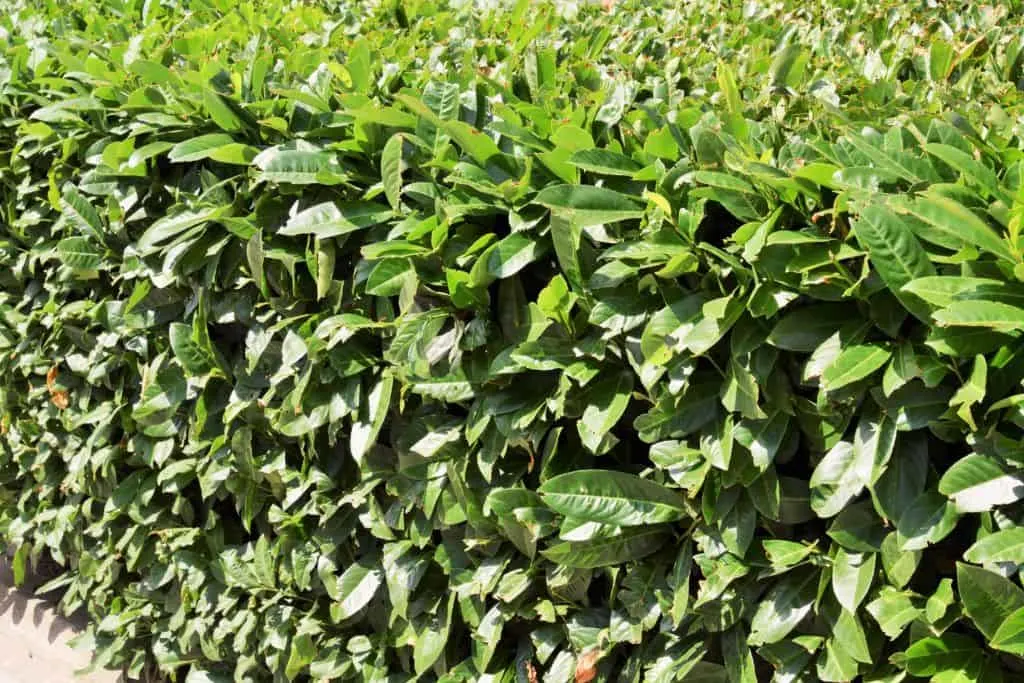
Light summer pruning will also help to keep a bay hedge in shape. If planting a new bay hedge, how many plants you will need to purchase to create a solid hedge will depend on how you purchase them.
If you buy bare root bay trees in winter, these should be placed in a double row, with 4.5 -6 plants per metre, depending on their size. With root balled specimens, or pot grown bays, you will require around 2 – 3.5 plants per metre.
Pruning a Bay Shrub or a Bay Tree
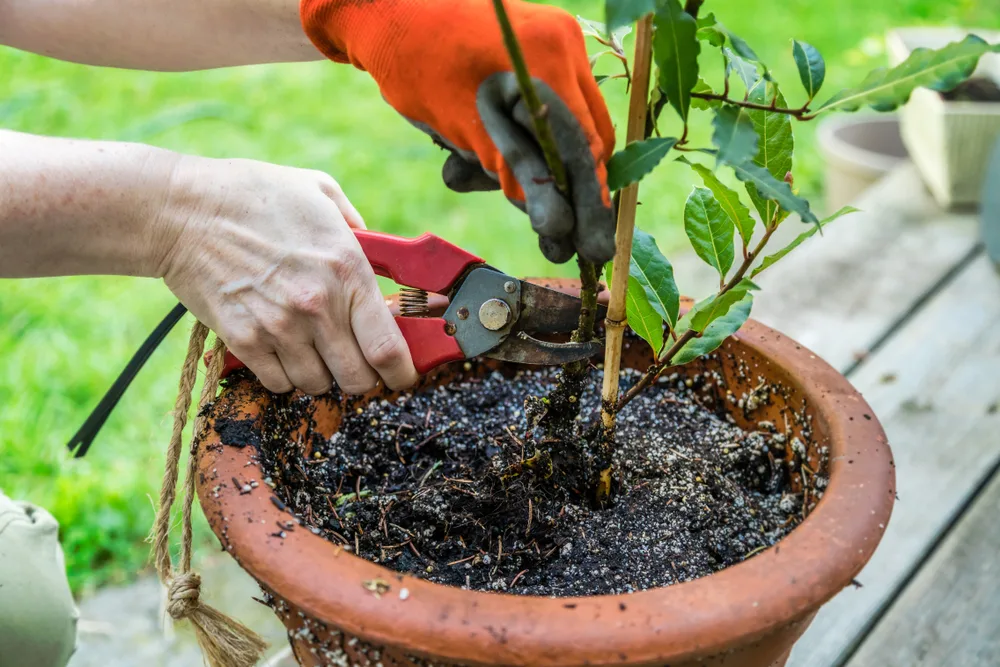
If you are growing a bay shrub or bay tree as an individual specimen plant then usually only light summer pruning for shape and size will be required. Simply cut back to a lower leaf or flower bud if required to keep the shrub looking good.
A mature bay tree will not usually require much pruning, but can tolerate hard pruning if required. However, it will be slow to recover and generate new growth. It is better to renovate large, overgrown bays over two or three seasons, in the late spring or early summer.
Watering & Feeding Bay
As mentioned above, bay is intolerant of overwatering, and it is generally a little better to under water rather than overwatering. Like other Mediterranean plants, bay trees can cope relatively well with dry conditions, though of course they should not be left to dry out entirely.
Bay does not require particularly fertile soil and so it is also important not to over-feed your plant. A gentle, organic plant feed given every couple of weeks in the summer months, however, may be beneficial, especially for plants in containers.
Identifying Problems When Growing a Bay Tree
Yellow Leaves:
These are usually a sign of waterlogging or cold weather damage, though can also indicate a nutrient deficiency, especially in container grown bay trees.
Leaf Spots:
This usually indicates a problem with waterlogging or wet weather. Plants in containers can be more prone to this problem. It is often a sign that the compost has to be refreshed and the plant should be re-potted.
Peeling Bark/ Cracking on Lower Stems:
This is usually caused by harsh winter weather and while it looks rather bad, as long as the rest of the plant is growing normally, it should not be fatal and your bay tree should recover.
Brown Leaves:
This is another sign of environmental problems. Pay attention to drainage, watering and shelter and it may not mean the end of your bay tree.
Curled leaves with pale-yellow/ brown edges:
If the leaves curl over, looking unsightly and discoloured, look under the curled leaf edges for little grey-white insects. You may have a case of bay sucker. While unsightly, the good news is that the long term health of the plant is not usually affected. Pick off and dispose of affected leaves.
Scale insects:
The bay can be affected by soft or horse chestnut scale. These tiny insects can be seen on the underside of leaves or on stems. You may not have to do anything, as the growth of the bay may be unaffected. However, attracting or introducing predatory insects can help to redress the natural balance in your garden.
Parasitoid wasps are sometimes introduced as a biological control for soft scale.
How To Dry Bay Leaves
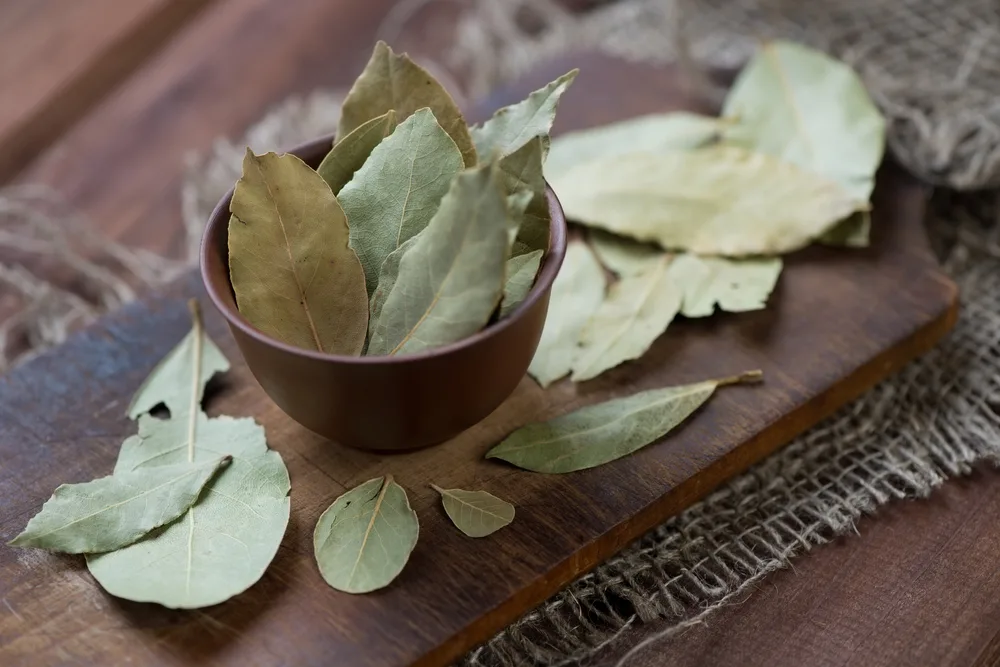
Leaves are best picked early in the morning to preserve their essential oil.
Once picked, place the bay leaves on paper towels so they aren’t touching each other. Place in a warm, dry, well ventilated room and leave for two weeks – turning once half way through. After two weeks, examine your bay leaves. If they are still dark green or soft in places, leave for another week.
Once you are sure your bay leaves are dry, store in a glass jar for using in the ways below.
You can speed up the drying process by drying bay leaves in a dehydrator.
How To Use Bay Leaves
Edible Uses for Bay Leaves
Bay laurel leaves are a crucial ingredient in French cuisine and part of a ‘bouquet garni’. They are used tied together with string along with other herbs in a range of soups, stews and other recipes before being removed at the end of cooking.
The leaves can be used fresh or dried. Dried leaves impart a stronger flavour but will lose their flavour if stored for more than one year.
Other Uses for Bay Leaves
Bay leaves also have a long history of use in herbal medicine, and are also used as a strewing herb, or as an insect repellent.
In your garden, it may also protect neighbouring plants from certain insects, and in store, it can protect other produce from weevils.
Of course, the leaves were also traditionally used to make laurel wreaths for emperors, generals and poets and can also simply be used in arrangements to add their pleasant fragrance to your home.
Buying A Bay Laurel Tree
If you’re convinced a bay tree is right for you, then you’ll find them commonly available at local garden centers or plant nurseries.
Amazon is always an option. This listing seems to have a number of good reviews.
However it always best to order from a specialist plant nursery. You can be sure the plants have been cared for, they’ll always come with clear instructions and care guidance and there will always be an expert at the end of the phone to help with any issues.
Nature Hills Nursery is one such specialist nursery and they offer this bay laurel which comes in a 4x4x6 container.

Get the famous Rural Sprout newsletter delivered to your inbox.
Including Sunday ramblings from our editor, Tracey, as well as “What’s Up Wednesday” our roundup of what’s in season and new article updates and alerts.


